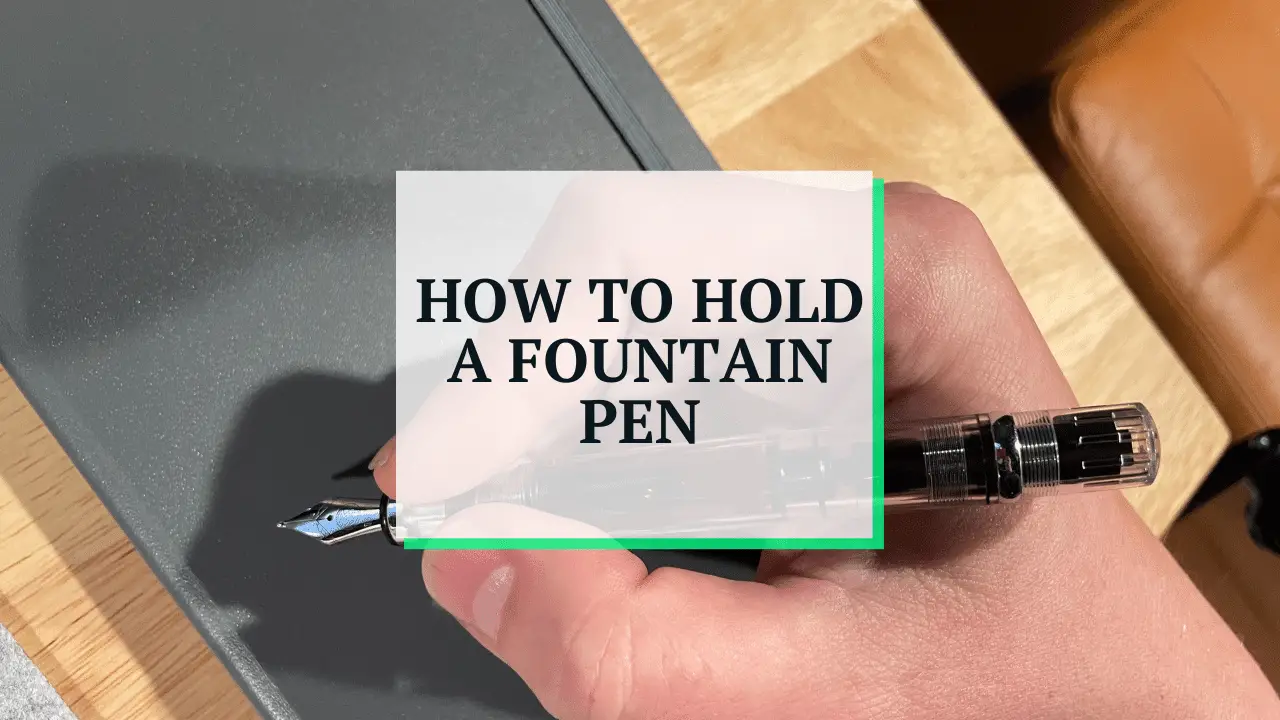Pens are just pens, right? Well, no!
When you first start writing with fountain pens–you might find it different or difficult to make your writing look good! It’s important you learn how to hold a found pen correctly!
Here’s how to hold a fountain pen correctly:
- Use a lighter touch than ballpoint pens
- Make sure the nib is positioned correctly (face pointing up)
- Keep the pen at a 45 degree angle (roughly)
- Try to use less wrist, and more of your arm to move the pen as you write.
But of course, there are many different ways to hold a fountain pen, and the best way is the way that feels most comfortable for you!
Experiment with different grips until you find one that works well for you. Also, keep in mind that how you hold your pen may need to be adjusted depending on the type of fountain pen you are using.
The Importance Of Proper Fountain Pen Technique
Bad technique = bad (or ugly) handwriting and tense muscles in your hand and wrist!
Which makes you sad 🙂
If you grip it too tightly, the ink will not flow as smoothly. If you grip it too loosely, the ink will flow erratically and may even leak. The ideal grip is one that is comfortable and allows you to apply pressure evenly.
There are many factors to consider when choosing the right grip for you. The size of your hand, the type of paper you are using, the actual PEN you’re using, and the way you hold the pen all play a role in how the ink will flow.
Experiment with different grips (and positions)to find one that works best for you. If you’re not comfortable, you’re not going to enjoy using the pen.
Remember, there’s no wrong way to hold a fountain pen (as long as it works, of course 😎)
How to Hold a Fountain Pen
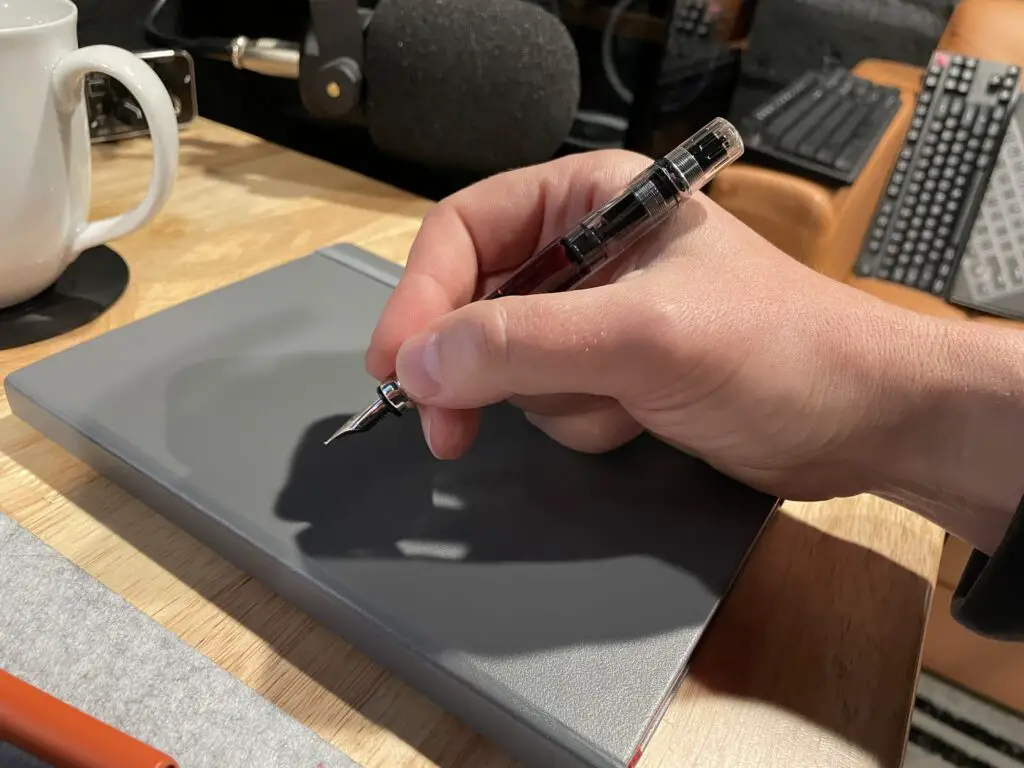
Let’s break down the fountain pen writing technique further.
First, do you want the pen cap put on the back?
When you remove the pen cap, you can optionally store it on the back of the pen. This increases the weight and can make a difference in how the pen feels in your hand.
Personally, I do NOT keep my cap on. The weight feels unbalanced. But it’s a personal preference!
Next, hold the barrel of the pen between your thumb and forefinger.
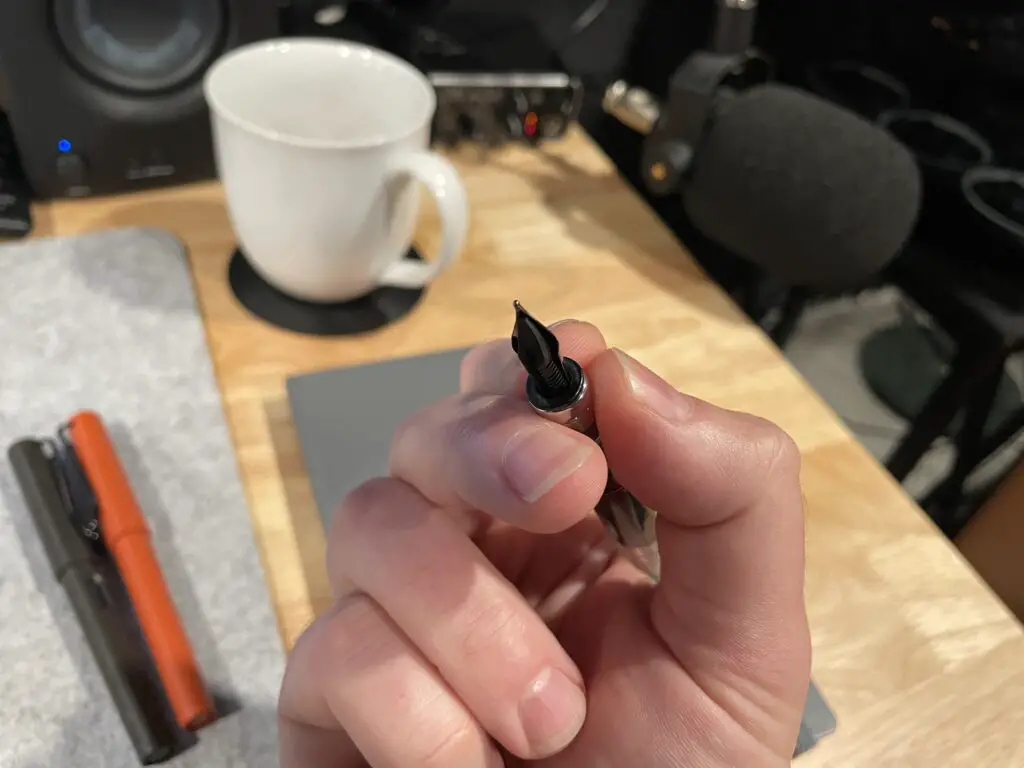
The position of your fingers will depend on the size of the pen, AND the size of your fingers!
Rest the pen gently on your middle finger and “crutch” of your palm (between your thumb and index finger).
Then, simply connect your index finger and thumb to grip the pen (forming 3 points with your index, middle finger, and thumb).
Do NOT grab the actual nib, that’d be too low and you’ll get ink on your fingers 😉
Rotate the pen until the nib is positioned correctly (face up)
The “face” or “top” of the nib is the side with text printed on it (usually the pen brand name and nib weight (bold, medium, fine, etc).
Generally speaking, the face of the nib should be pointed UP when you are writing.
BUT… you might need to tweak the position of the nib depending on the writing surface and how you hold the pen.
Try to find the perfect amount of ink flow.
RELATED: How to store a fountain pen (a beginner’s guide).
Keep the pen at a 45-degree angle
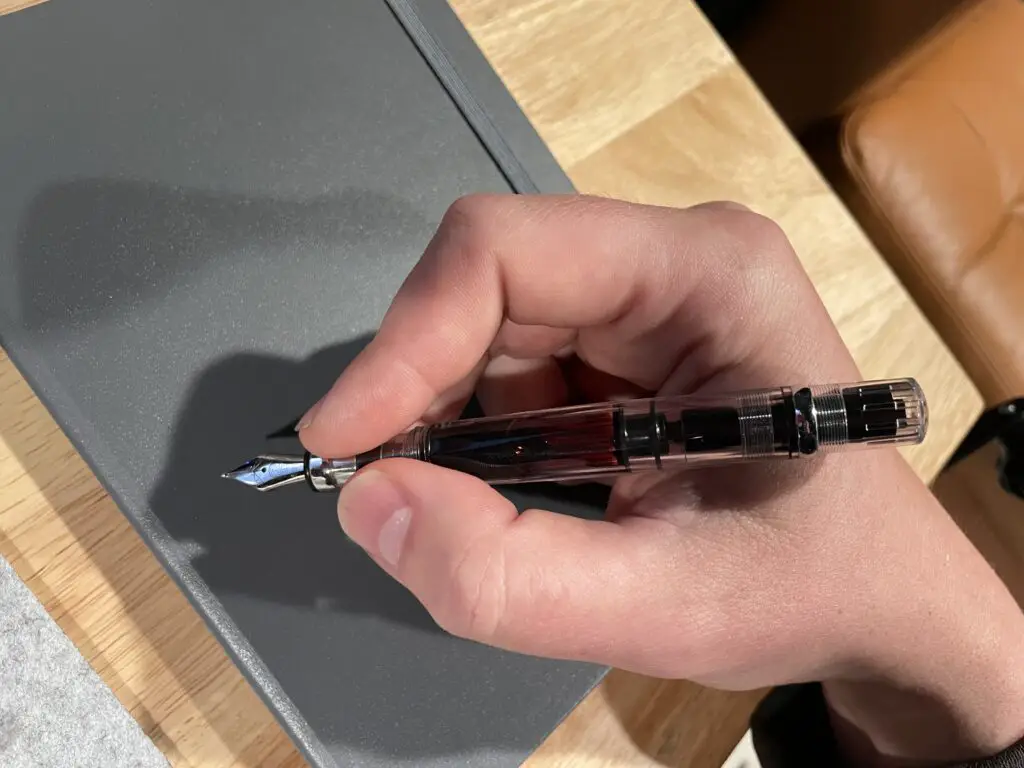
This position will maximize ink flow and prevent the pen from skipping.
Ballpoint pens don’t need this btw. You can literally hold ballpoint pens straight up and they work fine, but this will not get a great ink flow from a fountain pen, and you could end up damaging the nib!
45-degrees.
Again, you might need to adjust the angle depending on the writing surface and how you hold the pen.
Use less wrist, and more of your arm to move the pen as you write
Here’s where we start to get controversial!
The accepted wisdom is to use less wrist muscles when writing with a fountain pen. Instead, you should move your whole arm.
BUT this is not always possible or comfortable for everyone. You may find that you naturally move your wrist more when writing with a fountain pen. And that’s perfectly OK! (By the way–I don’t use my whole arm. I’ve never been able to get used to it!)
Do what feels most comfortable for you. It’s totally possible to write normally with a fountain pen.
Another common (and controversial) tip is to actually rest your entire arm and elbow on your writing surface (desk, etc). I.e. don’t put your paper on the end of the table where your arm will be hanging in mid-air.
I don’t usually do this either, because the paper ends up being too far away. Oh well.
The main thing to remember is to not grip the pen too tightly, and this will save some muscle tension in your hand. (though you might experiment with moving the fountain pen with your whole arm. See how it feels!)
Stay relaxed!
A funny thing happens when we start to THINK about how we write–we tense up! Going slower is generally a good thing to better your fountain pen handwriting, but it’s vital to stay relaxed.
This will yield a MUCH better writing experience, and your handwriting will look better too!
If you find yourself getting tense, take a break. Put the pen down, and shake out your hand.
Fountain pen handwriting should be fun–not something that causes you stress!
Rotate your paper to an angle
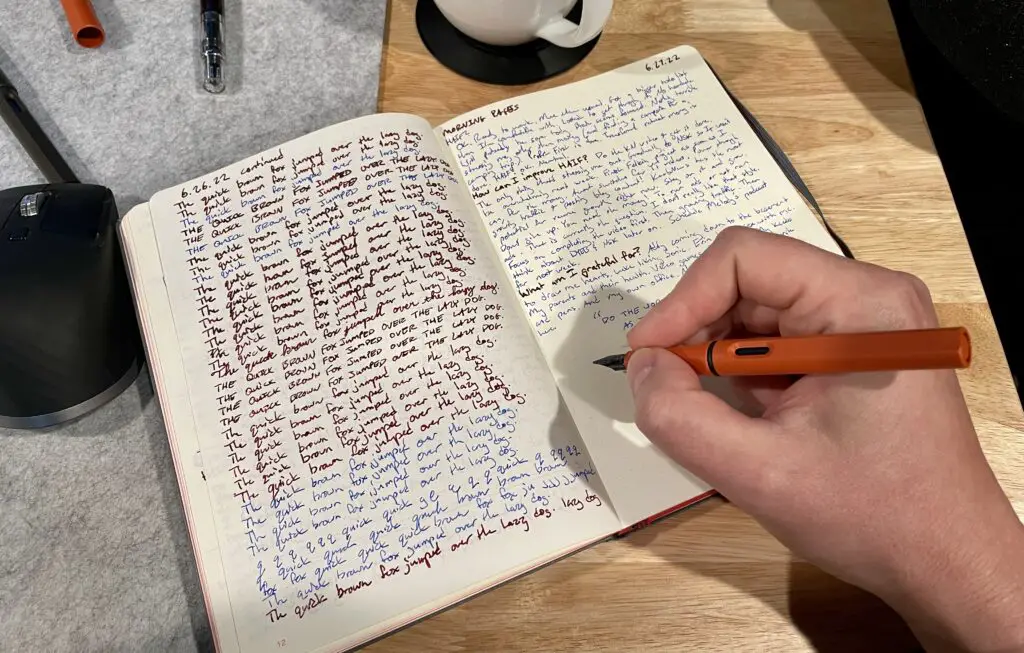
This will also depend on how you write, but you generally won’t keep the page positioned straight.
You’ll likely angle the page at about 45 degrees, more or less.
Also, you’ll probably want to hold the paper down with your non-writing hand! And depending on the paper, notebook, etc, move the offhand along near your writing spot (just to make sure the paper is pressed down accordingly).
If your pages are constantly “popping up” from the notebook, you might consider grabbing a notebook that lies FLAT. (I’m currently digging the Leuchtturm1917, which opens and lies pretty flat)
Final Words
While you will need to adapt your writing style for fountain pens, there are still different ways to hold one!
The best way to find what works for you is to experiment with different grips and find one that is comfortable and allows you to apply pressure evenly and get the most consistent ink flow.
Use the tips in this article as a starting point, but don’t be afraid to try something new. Remember, the most important thing is that you enjoy using your fountain pen!
